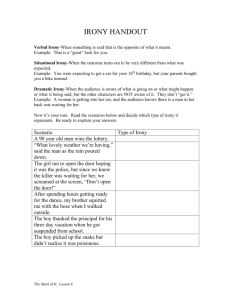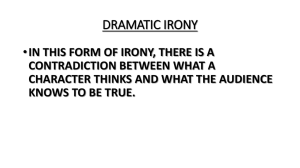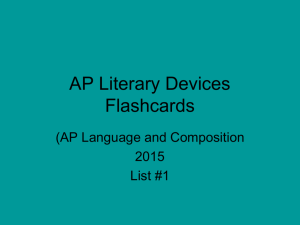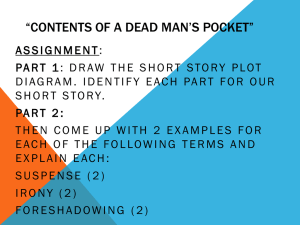Symbol and Irony - Talking Makes Us Human
advertisement
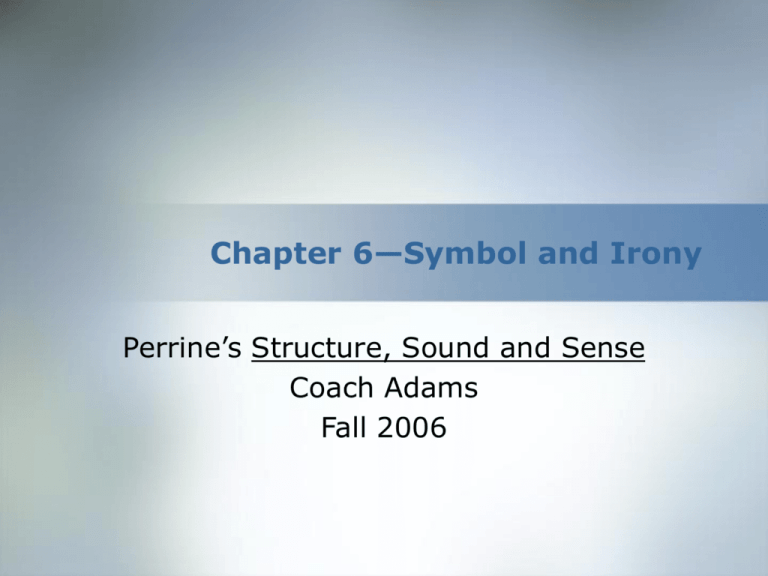
Chapter 6—Symbol and Irony Perrine’s Structure, Sound and Sense Coach Adams Fall 2006 Chapter 6 • What is a writer’s goal? • To say as much as possible as briefly as possible; to do this, they must master two tasks • 1. never waste space • 2. never waste a word Chapter 6 • Why do they use the words they do? Words that describe the story and characters and reveal insight simultaneously are the words they are after • Two tools they use: symbol and irony symbol • Has a literal meaning within the story (it exists), but suggests or represents other, external meanings as well (it stands for___) • Symbols can reinforce a meaning otherwise expressed (like the apple in “The Destructors”) • Symbols can carry the meaning alone (like the railroad in “Hills Like White Elephants”) assignment • Identify the ways in which symbolism contributes to the theme of one of the books or stories we’ve read so far… • Get a grading rubric before you leave. 4 hints for locating symbols 1. Stories typically give some detail that identifies the symbol as important. Does it have some special repetition or prominence? 2. Symbols must have a physical meaning within the story?. Does it literally exist? 4 hints for locating symbols 3. Symbols suggest a different interpretation than the literal one. a. “A symbol of” should never be synonymous with “is” or “is an example of” 4. A symbol can have multiple meanings or be interpreted with shades of difference; this is not to say that interpretation can be wide open. irony • Defined: an incongruity or discrepancy between expectation and reality. In your language: getting something other than what you expected. Three types of irony • Verbal—a difference between what is said and what is meant. (The townsman in “The Child by Tiger” who tells the story of “his own heroic accomplishments.”) Three types of irony • Dramatic—a difference between what a character says and a reader (or audience) knows. • All of “Miss Brill” is rife with dramatic irony, because the audience, unlike Miss Brill, sees her misery. Three types of irony • Situational irony—a difference between a. Appearance and reality b. Expectation and fulfillment “Defender of the Faith”—Marx defends his faith by punishing a Jewish soldier…not what we’d expect Remember the author’s motivation • Symbolism and irony allow authors to suggest and express meaning without explicitly stating it. They make literature sort of like a little puzzle for us to discover the answer to. The stories: • Select one of the following: • “The Guest,” p. 202 – Questions 1, 3-7, 9 • “Greenleaf,” p. 212 – Questions 2-4, 6-9 • The following is required: • Flannery O’Connor, “Good Country People” – http://www.geocities.com/cyber_explorer99/oco nnorgoodcountry.html – Essay: Analyze the use of symbolism and / or irony as a means of expressing the story’s theme.
